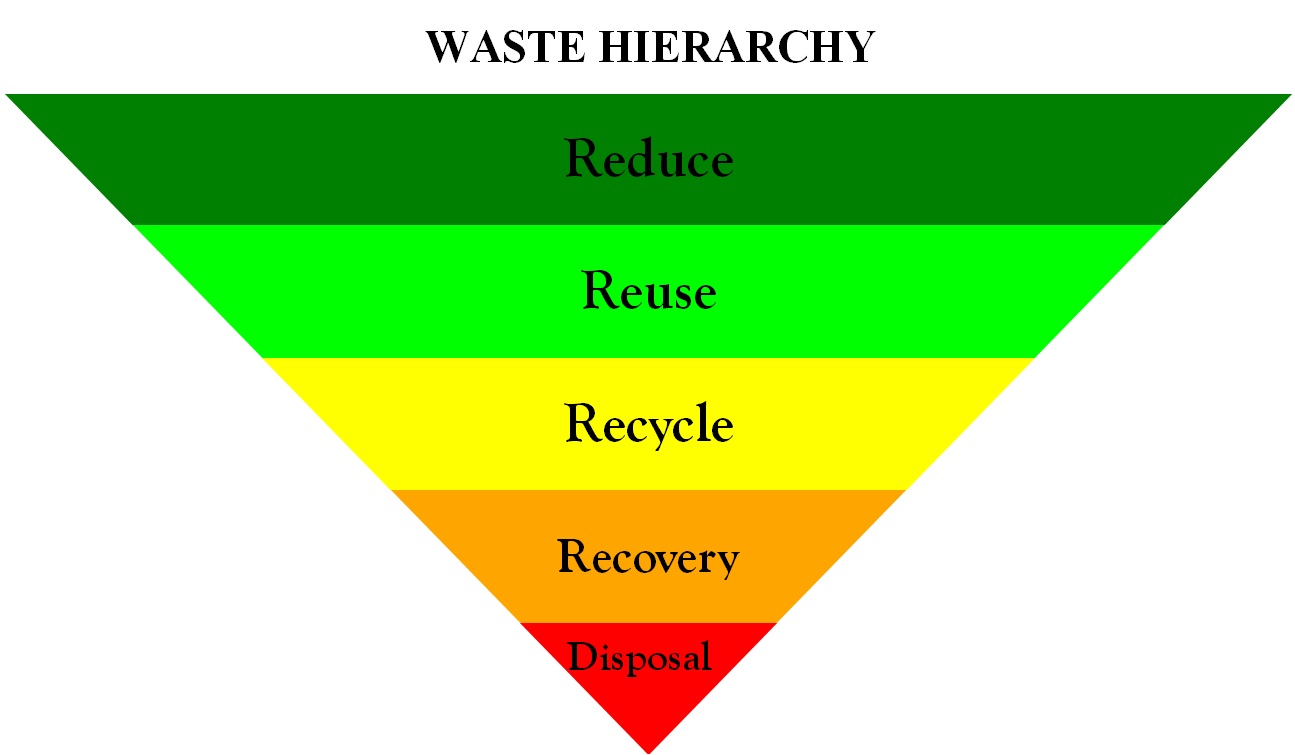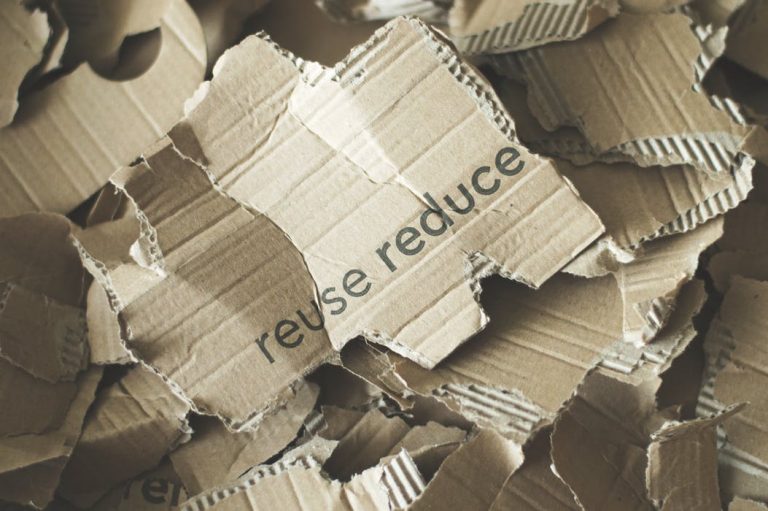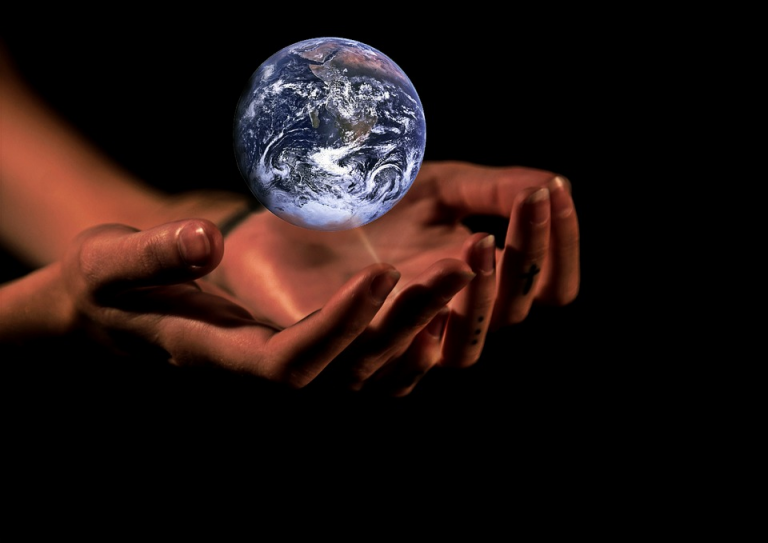
The concept of waste hierarchy – reducing, reusing as is, and recycling(recovering and converting to reuse) in Nigeria, is not as alien as most people may assume. This process has been commonly practiced in many households in Nigeria well before the advent of the Sustainable Development Goals (SDGs) and the Paris Climate Accord in 2015.
This culture – minimizing, reusing and recycling – in Nigeria was not as sophisticated then, as what many governments and organizations are working so hard to introduce to the global market today; however you look at it, what is obtainable now (globally) and the culture that existed in Nigeria before the 21st century stemmed from one basic principle: resource and material management. While the main aim today is to ensure sustainability – people, planet and profit (or prosperity, if you like) – the goal then, was to ensure the optimization of limited resources.
However, in the early 21st century, Nigeria’s “middle class” became more economically prosperous, there seemed to be little or no use for proper resource management as resources were fairly abundant and the culture of resource management as was practiced earlier was apparently too archaic to be sustained. The Nigerian resource management culture includes butnot limited to:
- Water Management and Harvesting: In the past (and to date in some rural households), rainwater was often collected in containers, stored and used for most domestic purposes like drinking, cooking, cleaning, amongst other uses. This practice helped to reduce erosion and flooding, mitigated the risk of nonpoint source pollution in the environment.In most households, water was reused, reclaimed and recycled, for example, the water collected after a bath could be used by another individual to take a bath as well, do laundry, clean up the house, used in flush systems (a practice still fairly common in some rural parts of the country); wastewater from certain activities in the house could also be used to water gardens and small farms around the house. Water was better recognized then as a valuable resource – probably due to the extent women and children especially had to go to collect it and ultimately (albeit unknowingly), water was better utilized as an energy resource.
- Biowaste Collection and Reuse: Expired and waste food materials and other decomposable materials were sometimes stored and its decomposed form used as manure in households that had a portion of their compounds set aside for small-scale (subsistence) food farming. For those who engaged in subsistence husbandry, these waste food materials were oftentimes fed to their livestock. Human waste was stored in the latrines or tanks which were emptied once full, by waste collectors who in a number of cases, disposed of the waste by selling to farmers for use as manure.
- Non-degradable Materials Waste Collection and Recycling: Used glass and plastic containers, bottles and others, were collected and sold back to companies that manufactured or made use of these materials as a source of extra income for several households. Other materials no longer in use in a particular household were either given out to other families or sold off and diverted from the landfills. Most times these materials ended their useful lives in a particular region and were used for other purposes after they have been given away or sold off.
To eliminate any form of ambiguity, it is important to emphasize on the fact that some of these practices would, should and most likely can never be replicated in totality but the principles behind them are similar to what sustainability (with special focus on reusing, reducing, recycling, recovering and diversion from landfill sites) is all about. We must encourage more closed systems – where materials instead of being sent to landfill sites after the end of their usable lives, begin life again for another purpose or use – rather than an open system where materials are constantly inputted at cradle stage and exit the system as waste.
Rapid urbanization and exponential population growth in Nigeria necessitates the urgent need for comprehensive and inclusive waste management. With technological advancements comes the opportunity to ensure reducing, reusing, recycling, recovering and diversion of materials from landfills (or dumpsites) and water bodies – at a fast pace, as well as in large volumes – and also prevent these materials from increasing the heat island effects in the environment which contributes to the greenhouse effect, global warming and climate change.
Harvesting rainwater with rainwater cisterns also avails residential urban and rural households, commercial and industrial buildings the opportunity to re-use stored water for suitable purposes, which in turn reduces the reliance on potable water. This ensures less energy is expended in collecting water for use (by women and children) and consumed i.e. in having water pumped from its source to its point of use.
Greywater collection and recycling systems can also help reduce the demand for potable water by treating wastewater (without fecal contamination) and redirecting for usage in domestic applications other than drinking, bathing, and washing of clothes. Flush systems such as urinals, and water fixtures and faucets are also important in managing water resources – installation of low-flow water systems and urinals helps reduce usage of potable water. It is also important to use water efficient appliances especially appliances with ENERGY STAR ratings.
Anaerobic digesters decompose human and animal wastes and convert its chemical energy into heat or electrical energy which can be used in many residential, commercial and industrial applications. Some domestic and food waste can be used as fuel for boilers and furnaces and unlike reliance on fossil fuels, the use of these waste materials as fuel, tend to generate fewer carbon emissions as well as diverts wastes from landfill sites and water bodies.
As the world unites to combat the contribution of human activities on climate change, Nigeria as a signatory to the Paris Climate Accord of 2015 must not be left out. It is extremely important that we as Nigerians do not just discuss the problems but also act by working to proffer practicable solutions for the Nation and the world at large.
In policy making and execution, we must ensure sustainable practices and also seek to re-engage some old culture of diverting, reusing, reducing, recovering and recycling materials to help preserve the environment, optimize the use of resources, create wealth and ensure the availability of the country’s resources for the successive generations. Creating economic prosperity through proper materials and waste management should be of keen interest to the policymakers in Nigeria. To manage efficiently reusing, recycling, recovering, and diverting processes, it is extremely important to measure the volume, rate of flow of the material in and out of the system of focus. If it cannot be adequately measured, it cannot be efficiently managed.
Article Contributed By: Olabode Omolere






Leave a Comment